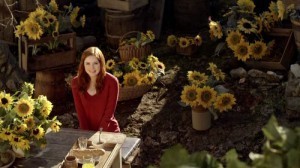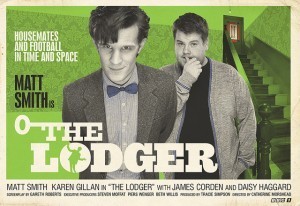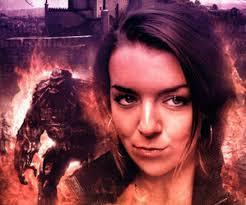Tansy Rayner Roberts's Blog, page 70
November 21, 2013
Galactic Suburbia 91
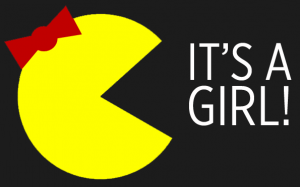 In which Alisa has a baby, and Alex & Tansy put a bow on it. Not the baby. The podcast!
In which Alisa has a baby, and Alex & Tansy put a bow on it. Not the baby. The podcast!
Download the episode here.
Birth Announcement: Welcome to Mackenzie Charlotte & all our love and best wishes to the recovering and delighted new parents, Alisa and Chris.
World Fantasy Awards
British Fantasy Awards
Culture Consumed:
Alex: Feminist Frequency’s Tropes vs Women in Video Games; Ancillary Justice, Ann Leckie; Menial: Skilled Labor in SF, Kelly Jennings and Shay Darrach
Tansy: Nanowrimo! Cranford, Elizabeth Gaskell; Horrible Histories; Wife in Space by Neil Perryman, The Time Machine (Destiny of the Doctor), 1963: Fanfare of the Common Men, The Space Race, The Assassination Games; Night of the Doctor
INK BLACK MAGIC BY TANSY RAYNER ROBERTS available now from Fablecroft, Amazon & bookshops who order it in.
GOODREADS GIVEAWAY FOR INK BLACK MAGIC
Doctor Who Women on the Radio including Tansy
Pet subject: SFF for children (they cross genres more easily than adults, basically)
Alex: Victor Kelleher (especially Taronga); Playing Beatie Bow, Ruth Park; Riddle of the Trumpalar, Judy Bernard-Waite; The Hobbit, JRR Tolkien
Tansy: Diana Wynne Jones; Robyn Klein (Halfway Across the Galaxy and Turn Left); Which Witch, Eva Ibbotson; Margaret Mahy, Aliens in the Family and all her books about pirates; Ruth Chew; Five Children and It, E. Nesbit; Edward Eagar (Half Magic and Seven Day Magic – stories for kids who love to read and know how to manage a magical adventure!); comics like Gunnerkrigg Court, Zita the Space Girl, Betty & Veronica spin-offs. The Case of the Origami Yoda bridging fantasy and reality!
Also Possum Magic, Magic Pudding, and other Australian picture-book classics! From England, Charlie and Lola by Lauren Child and various books such as Fairy Shopping by Sally Gardner are appreciated for their gorgeous collage art as much as the stories.
Please send feedback to us at galacticsuburbia@gmail.com, follow us on Twitter at @galacticsuburbs, check out Galactic Suburbia Podcast on Facebook and don’t forget to leave a review on iTunes if you love us!
November 20, 2013
Verity! Episode 28 – One-derful, Hmm?
 This week we battled the evil monster known as SkypeLag to bring you a podcast full of squee and surprise. Join Deb, Erika, Katrina, and Tansy as we get happy about Who-things, gush about McGann, and find representative aspects where we least expected them. We cover our reactions to “The Night of the Doctor” and our impressions of “Planet of Giants” as a representative story for the first Doctor. Perhaps not a common choice, but one that made for a rollicking discussion!
This week we battled the evil monster known as SkypeLag to bring you a podcast full of squee and surprise. Join Deb, Erika, Katrina, and Tansy as we get happy about Who-things, gush about McGann, and find representative aspects where we least expected them. We cover our reactions to “The Night of the Doctor” and our impressions of “Planet of Giants” as a representative story for the first Doctor. Perhaps not a common choice, but one that made for a rollicking discussion!
^E
Also covered:
Erika watched (and LOVED) “The War Games”! Guested on The Incomparable! And wants to go see All the Whos in Whoville!
Kat enjoys the glut of new 8th Doctor gifs!
Tansy demonstrated excellent parenting by raising a child who loves “The Ice Warriors“! And plans to knit a Yeti!
Deb gives LI Who high marks! And did a squeeful interview for HeadOverFeels!
Bonus links:
“The Night of the Doctor”!
Tansy, Erika, & Lynne on Australian radio!
Tansy’s 8th Doctor recommendations for Big Finish newbies
Paul McGann on sale at Big Finish
BBC America’s wall-of-Doctor Who schedule
Download or listen now (runtime 1:31:52)
Download: verityep28.mp3
November 16, 2013
Watching New Who: Vincent & the Doctor/The Lodger
Tansy and Tehani love this season so much we’re making David do more work – we’re changing up our usual plan and reviewing each episode, in sets of two.
TEHANI:
This is one of my very favourite stories so far. It always ALWAYS makes me cry (sometimes in different places), and I adore it for so many reasons, the guest actors Tony Curran and Bill Nighy being two of them.
TANSY:
I have an innate fondness for this story because of what it did for my daughter. Raeli must have been six or so when she watched it. I hesitated over showing it to her at first because of the darker themes of suicide and depression, but she took to it beautifully, allowing us to have a conversation about mental illness that was very important.
She also fell in love with Vincent’s artwork through this story. I sent her outside at a party once to play with chalks on the concrete and she recreated about four different Van Gogh paintings. With the Doctor Who twist on each, of course. It was a beautiful realisation, and her interest in art progressed from there – I later found her a gorgeous picture book called Vincent’s Colours which pairs lines from his letters to his brother with images of the paintings he is discussing.
TEHANI:
That is lovely Tansy – I think there is a great capacity for this sort of thing in Doctor Who, and when you consider its origins as an educational program, maybe we shouldn’t be surprised! Personally, I have a Doctor Who Van Gogh coffee cup which is just beautiful.
I thought the mental illness aspect was sensitively handled, and it was, for me at least, a believable portrayal. I have seen criticism about the ending, with people unable to understand why Van Gogh would still have committed suicide even knowing the legacy he leaves on the world, but I don’t have that problem. It’s horribly sad, but I also think it’s something that happens when people are gripped by such devastating depression.
TANSY:
I think anyone who can’t understand that ending is pretty naive about how mental illness works!
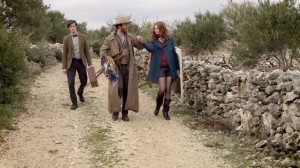 This story is held up often as one of those great ‘introduction’ stories that stands alone (like “Blink”) and appeals greatly to people with no Doctor Who knowledge, but I also want to comment on how beautifully it contributes to the season arc. Instead of a vague, hinty type of arc like Bad Wolf or Vote Saxon where the significance is only revealed in the finale, this season is paced beautifully with shifts and character developments every few episodes. So it’s broken up into The Amy Adventures, The Amy and Rory Adventures, and here the After Rory Adventures, in which Amy is grieving her loss without remembering it. The friendship she develops with Vincent, which starts out as her usual surface ‘flirting without meaning it’ but becomes much deeper, is really a special thing to watch and the scene in which he asks why she is crying is perfect. Also the bit with the sunflowers always makes me smile.
This story is held up often as one of those great ‘introduction’ stories that stands alone (like “Blink”) and appeals greatly to people with no Doctor Who knowledge, but I also want to comment on how beautifully it contributes to the season arc. Instead of a vague, hinty type of arc like Bad Wolf or Vote Saxon where the significance is only revealed in the finale, this season is paced beautifully with shifts and character developments every few episodes. So it’s broken up into The Amy Adventures, The Amy and Rory Adventures, and here the After Rory Adventures, in which Amy is grieving her loss without remembering it. The friendship she develops with Vincent, which starts out as her usual surface ‘flirting without meaning it’ but becomes much deeper, is really a special thing to watch and the scene in which he asks why she is crying is perfect. Also the bit with the sunflowers always makes me smile.
DAVID:
I really did enjoy this story, but I have to admit that it didn’t live up to my lofty expectations. When I saw the name of Richard Curtis I was incredibly excited because I have never seen anything he was involved in that I didn’t love and that didn’t move me (combine him and Hugh Grant and I am a mess!) and when Bill Nighy turned up it looked even more promising.
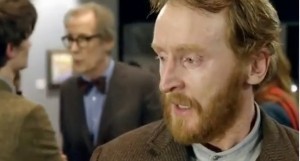 But, I found this to be a very uneven episode. There were some genuinely beautiful moments, and some heart wrenchingly sad ones, but also some parts that just fell a little flat. Fortunately, there is enough gold in here to tip the balance, and the last section is particularly emotional. Bill Nighy is brilliant as he delivers his speech describing Vincent’s achievements and it is hard not to be deeply moved by the raw emotion on display (even if the claim that Van Gogh is the greatest artist in history is extremely contentious). And then Amy’s realisation of the inevitably and weight of history, and her grief at the fact that they couldn’t save Vincent – I really felt for her.
But, I found this to be a very uneven episode. There were some genuinely beautiful moments, and some heart wrenchingly sad ones, but also some parts that just fell a little flat. Fortunately, there is enough gold in here to tip the balance, and the last section is particularly emotional. Bill Nighy is brilliant as he delivers his speech describing Vincent’s achievements and it is hard not to be deeply moved by the raw emotion on display (even if the claim that Van Gogh is the greatest artist in history is extremely contentious). And then Amy’s realisation of the inevitably and weight of history, and her grief at the fact that they couldn’t save Vincent – I really felt for her.
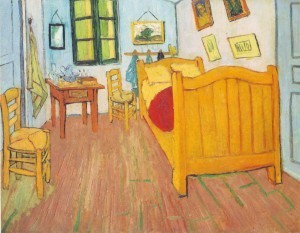 TANSY:
TANSY:
Regardless of the writing aspect of the story, the visual design is extraordinary – the way that the characters actually move through so many set pieces which look like Van Gogh’s paintings and are often shot at specific angles (like the scene in Vincent’s bedroom). The street outside the bar, as well.
DAVID:
Not to mention the Who versions of his paintings! No wonder I have seen them on t-shirts and desktop backgrounds, they are amazing. I agree completely, Tansy, the whole episode is suffused with the look and feel of Van Gogh’s art.
TEHANI:
It’s a gorgeous episode in so many ways, visually and in terms of heart as well; heartwrenching, funny, sad and even a little bit scary. It was actually one of the Hugo Award nominees for 2010, and though it lost out to the season finale, it definitely deserved to be there.
TANSY:
Also, anyone who has issues with the whole invisible giant chicken monster should definitely check out the corresponding episode of The Ood Cast which has a brilliant sketch about the ramifications of leaving a giant invisible monster corpse in a small country church … and of course a fabulous re-rendering of Don McClean’s ‘Vincent.’
TANSY:
It’s really odd rewatching this one now because I have just finished listening to the audiobook of James Cordern’s autobiography. His work in Doctor Who is only briefly referenced but I do feel I now have a greater sense of just how famous he was in the UK when he was cast in this episode, and why his presence caused almost as much trepidation and alarm among British fans as Billie Piper (the pop star!) and Kylie (the POP STAR).
Still, no one need have worried! Craig is a brilliant character, and Cordern plays him with so much heart. In fact, this story is all heart. Heart and football. It’s a wonderful showcase for Matt Smith’s Doctor, showing off his alienness and his humanity, and his capacity for friendship. While the Craig-Doctor friendship is the emotional core of the story, and tends to attract a lot of fan love, I don’t see nearly enough credit given to Daisy Haggard as Sophie, who works beautifully off both actors – the Debbie Reynolds to their Kelly-and-O’Connor! (I’ll leave you to figure out which one is Gene Kelly and which is Donald O’Connor).
DAVID:
This is hands down my favourite episode of the season, which is quite an achievement given how much I enjoyed the Angels two parter. This episode is just so much FUN! But, there is also a real emotional core to it. Funnily enough, if you sat me down with no prior knowledge and shown me this and “Vincent and the Doctor” and asked me which one Richard Curtis had written I wouldn’t have hesitated in picking this one.
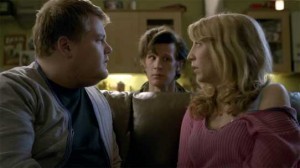 It’s interesting you mention the trepidation surrounding Cordern’s casting, Tansy. One of the interesting effects of watching New Who so long after it actually aired is that I have been oblivious to a lot of the things people watching it at the time have experienced, whether waiting so long between episodes or the discussion of the latest rumours and news. As an example, the first I knew of Kylie being in a particular episode was when I watched it and thought, “Hang on – she looks familiar!”
It’s interesting you mention the trepidation surrounding Cordern’s casting, Tansy. One of the interesting effects of watching New Who so long after it actually aired is that I have been oblivious to a lot of the things people watching it at the time have experienced, whether waiting so long between episodes or the discussion of the latest rumours and news. As an example, the first I knew of Kylie being in a particular episode was when I watched it and thought, “Hang on – she looks familiar!”
So, I went into this episode with no preconceptions about who I was going to see and how they might play their role. I just sat back and enjoyed! Cordern is perfect in this, but he has an excellent foil in Haggard, who is exactly right for this and, as you say, plays perfect of both Cordern and Smith, who is also quite magnificent.
TEHANI:
I’m with you, David – I felt like I’d seen “Craig” somewhere before when I first watched the episode, but didn’t know anything else about him – happens to me a LOT with Doctor Who guest stars!
TANSY:
He’s also now the voice of Little Charley Bear, which may be more familiar to any parents reading this post…
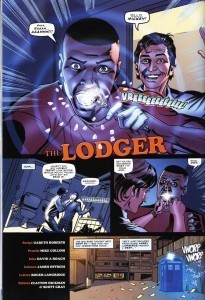 Fun fact, this story by Gareth Roberts is adapted from an earlier comic strip in which the Tenth Doctor moves in with Mickey. Yes, really! The football stuff (which many assumed was put in due to Smith’s history as a professional footballer in his youth) was an integral part of the original story, and the gag in which Matt Smith tries to use Craig’s toothbrush as a weapon is an inversion of the original joke – where Mickey picks up what he thinks is his own electric toothbrush and accidentally sonics all his teeth out.
Fun fact, this story by Gareth Roberts is adapted from an earlier comic strip in which the Tenth Doctor moves in with Mickey. Yes, really! The football stuff (which many assumed was put in due to Smith’s history as a professional footballer in his youth) was an integral part of the original story, and the gag in which Matt Smith tries to use Craig’s toothbrush as a weapon is an inversion of the original joke – where Mickey picks up what he thinks is his own electric toothbrush and accidentally sonics all his teeth out.
TEHANI:
*snort* I love your little pieces of Doctor Who production trivia 
TANSY:
I do feel this is a near-perfect Doctor Who story as well as a near-perfect Eleventh Doctor story – my only quibble comes from an authorial blind spot. I don’t find all of the house’s attempts to lure its victims in is remotely credible – in the case of both of the first two victims, the situation seems straight out of a horror movie. I especially don’t believe that a woman on her own would go into a strange house if she heard a man calling for help without more information – women are simply too attuned to potential dangers. If it was more explicit that the voice was coming from someone very old or a child (as when Sophie is lured up – the only convincing one of these scenes!) then I would find it much easier to believe.
TEHANI:
Agree! You might call triple-zero (or whatever the number is in the UK), but actually go into a house like that? Nuh-uh.
DAVID:
Of course, that is pretty much par for the course with any horror movie ever made, and still not as stupid as the behaviour of the characters in The Walking Dead!
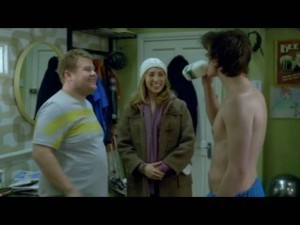 This episode presents a master class in getting your audience to invest in a character. Within five minutes we know everything we need to know about Craig, and we are on his side. Little touches like the way in which he holds Sophie’s keys flesh Craig out more than slabs of dialogue ever could. And, this is one of the few episodes where I was made to feel genuinely concerned about what was going to happen to the characters, I really wanted a happy ending for everyone involved and I was honestly worried that Sophie wasn’t going to survive!
This episode presents a master class in getting your audience to invest in a character. Within five minutes we know everything we need to know about Craig, and we are on his side. Little touches like the way in which he holds Sophie’s keys flesh Craig out more than slabs of dialogue ever could. And, this is one of the few episodes where I was made to feel genuinely concerned about what was going to happen to the characters, I really wanted a happy ending for everyone involved and I was honestly worried that Sophie wasn’t going to survive!
TEHANI:
A fairly Amy-lite episode, and her part of the story was very peripheral to what was going on. I agree with what you said before about Sophie’s role, Tansy, but this one was definitely all about the “bromance” in terms of the main players.
TANSY:
It’s lovely seeing the Eleventh Doctor build a friendship from scratch, and the way he drives Craig crazy, creates so many problems for him, and then solves what’s wrong with his life. It really is the essence of bromance – that is, a story about platonic male friendship that is given the same narrative attention that a male-female romance usually gets. The Eleventh Doctor is actually totally channelling Katharine Hepburn from Bringing Up Baby – he’s the madcap chaotic one who breezes into Craig’s life and takes it apart piece by piece.
 TEHANI:
TEHANI:
I’m a fan of the soccer scene…
TANSY:
OMG the soccer! It’s so charming and also moves forward the characterisation AND the plot of the story. A great scene. I know a lot of people (including me) assumed this was written in specifically because of Matt Smith’s brief history as a pro footballer, but the pub league bit was always in the story from the original comic.
DAVID:
A fair bit of New Who has been about the Doctor’s relationships with female characters, romantic or otherwise, so it is fascinating to see the Doctor learning how to be a bro! It’s definitely a different dynamic than with Mickey, or even Rory, and it’s a whole lot of fun. Perhaps part of that difference comes from the fact that, instead of them coming into the Doctor’s life, this is the Doctor becoming part of Craig’s. I did feel sorry for Craig a few times during the episode, because the Doctor does hog the limelight, but ultimately the Doctor learns as much from Craig as he does from the Doctor – and it is obviously that he does care for Craig’s well being.
TANSY:
I like that Craig is envious of the Doctor, but the Doctor himself displays absolutely no jealousy or even awareness that he might be a romantic threat to Craig and Sophie. It’s a far cry from Nine and Ten’s outright competitiveness with other young men and even implied sexual jealousy around Mickey, Adam, Jack etc. I love the innocence of Eleven, and how he can cause trouble and conflict simply by existing.
Craig’s constant outrage at the Doctor’s weirdness being accepted and embraced by others is quite a fascinating character trait.
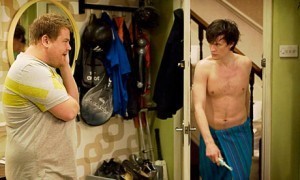 DAVID:
DAVID:
Would it be fair to say that this episode has the most Doctor flesh since “Spearhead from Space”?
TANSY:
And no tattoo! Sad. But yes, I appreciate being able to add another Doctorish shower scene to the canon!
DAVID:
One of the things that I am not a huge fan of, but that you just have to deal with when watching New Who, is that when it comes to the Doctor’s gadgets it is definitely very soft science fiction. The sonic screwdriver may as well be a magic wand, and there a lot of things just thrown together without even paying lip service to any sort of science behind them. But, if you can’t just roll with that you are probably watching the wrong show!
TEHANI:
I like to roll with it  I might be starting to get a bit picky about some of the handwavium, but you know what? That part of the fun!
I might be starting to get a bit picky about some of the handwavium, but you know what? That part of the fun!
TANSY:
I agree with you, David, but it never bothers me. I’m not really a fan of technobabble for the sake of it, and most of the ‘lip service’ science of the Classic Show was rubbish any way. Let us never forget the megabyte modem.
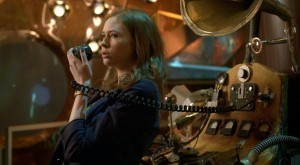 Overall this is a clever story and it’s very nice to see the Doctor playing with characters other than his regular companion. Given how many episodes in this season provide Karen Gillan some fantastic material, I think it’s fine to give Amy a break, and helps refresh us before we leap into the finale.
Overall this is a clever story and it’s very nice to see the Doctor playing with characters other than his regular companion. Given how many episodes in this season provide Karen Gillan some fantastic material, I think it’s fine to give Amy a break, and helps refresh us before we leap into the finale.
Having said that, rewatching this story after Season 6 brings a whole new light to Amy’s slight subplot. What exactly is going on in that TARDIS, and could there be someone there we don’t see/remember tossing the TARDIS around like that?
TEHANI:
You mean, something rather quiet?  We’ll have to wait and see!
We’ll have to wait and see!
PREVIOUS “New Who In Conversations”
“Rose”, S01E01
“Dalek”, S01E06
“Father’s Day, S01E08
“The Empty Child/The Doctor Dances”, S01E09/10
“Bad Wolf/The Parting of the Ways”, S01E12/13
Series One Report Card – David, Tansy, Tehani
“The Christmas Invasion,” 2005 Christmas special
“New Earth”, S02E01
“School Reunion,” S02E03
“The Girl in the Fireplace”, S02E04
“Rise of the Cybermen/Age of Steel”, S02E05/06
Army of Ghosts/Doomsday, S02E12/13
Series Two Report Cards: David, Tehani, Tansy
“The Runaway Bride”, 2006 Christmas Special
“Smith and Jones”, S03E01
The Shakespeare Code & Gridlock, S0302-03
Human Nature/The Family of Blood S0308-09
Blink S0310
Utopia / The Sound of Drums / Last of the Timelords S0311-13
“Voyage of the Damned,” 2007 Christmas Special
Series 3 Report Cards: David, Tehani, Tansy
Partners in Crime, S0401
The Sontaran Stratagem/The Poison Sky, S0405 S0406
Silence in the Library/Forest of the Dead, S0408 S0409
Turn Left, S0411
The Stolen Earth/Journey’s End, SO412-13
Series 4 Report Cards: Tansy, Tehani, David
The Eleventh Hour, S0501
The Beast Below/Victory of the Daleks, S0502-3
The Time of Angels/Flesh and Stone
Vampires of Venice/Amy’s Choice, S0504-5
The Hungry Earth/Cold Blood
November 15, 2013
Anniversary Hijinks: Doctor Who Women on the Radio
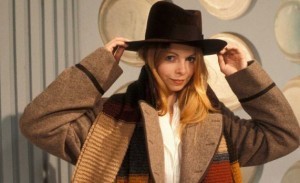 I suspect there are going to be a lot of Anniversary hijinks Doctor Who posts over the next two weeks. Today I woke up to discover that I was on Radio National yesterday! ABC presenter Cassie McCullach asked me to talk to her about the history of women in Doctor Who, and we pulled in two of my fellow Verities, Erika Ensign and Lynne M Thomas!
I suspect there are going to be a lot of Anniversary hijinks Doctor Who posts over the next two weeks. Today I woke up to discover that I was on Radio National yesterday! ABC presenter Cassie McCullach asked me to talk to her about the history of women in Doctor Who, and we pulled in two of my fellow Verities, Erika Ensign and Lynne M Thomas!
The Who Girls:
50 years of women in the Tardis
We talked about various female companions on the show, our favourites and our role models, and how the show has changed in its portrayal of women. Cassie also threw in the talking point that this year is the 50th anniversary of James Bond as a movie franchise too, and asked us to reflect on how different the portrayal of women has been across the two different series.
I don’t even now quite remember what we said because we recorded it a while ago, but I’m pretty sure that sex, sexism, screaming, equality, romance, heroism and feminism all got a look in. We also looked at what the Doctor and the male companions on the show offer as an alternate ideal of masculinity.
And of course we had so much fun! We talk about Doctor Who and women in the show pretty much every week on Verity, but having someone new to bounce ideas off is always cool. Thanks, Cassie, for giving us an opportunity to be part of the ABC’s massive Doctor Who celebrations.
You can download the episode here, and also check out the special digital channel that the ABC are running for the Doctor Who anniversary only. That page also gives you the Australian screening times for The Day of the Doctor – I’m going to be up at 6:50 to watch it with my kids! What about you?
EDIT: It will also be repeated on Sunday morning at 11am AEST on Radio National
November 14, 2013
After Eight – Night of the Doctor
He was the Doctor longer than anyone else, he came up against Cybermen, Zygons, Morbius, the Celestial Toymaker, the Meddling Monk, the Giant Spiders, the Krynoids, and his own people. He lost more to the Daleks than you could possibly imagine a Doctor could lose. Companions fell in love with him from time to time. He reunited with his granddaughter Susan, AND President Romana of Gallifrey.
The Eighth Doctor, in other words, has been around. Between the books, the comics and especially the amazing body of audio plays from Big Finish, this Doctor has developed in so many interesting directions that his single TV appearance in “the TV movie” felt less and less like you’d even put it in the top ten of his best stories.
Delightfully, and in a wonderful surprise move, Steven Moffat decided to do something about that, and so the special minisode Night of the Doctor was posted to the internet on what also happened to be Paul McGann’s birthday. Watch it before reading on!
There are so many things to love about this. We get to see the older, grizzled Eighth Doctor! The work of Big Finish is validated! Charley Pollard and Lucie Miller are OFFICIALLY CANON (if, you know, you didn’t consider them that already, crazy people). There’s the regeneration sequence which leads intriguingly into the Hurt Doctor storyline of the upcoming Day of the Doctor – and while this means that John Hurt’s “non Doctor” is exactly what most fans predicted he was, this is in no way a disappointment, largely because of the beautiful nod to the past, executed so cleverly.
The darkness of the story hinted at here, of the midst of the Time War and the toll it has taken on the Doctor (who frankly had been through quite enough long before it started, thank you very much), is conveyed very effectively through McGann’s older, worn-around-the-edges performance.
Also OMG The Sisterhood of Karn!
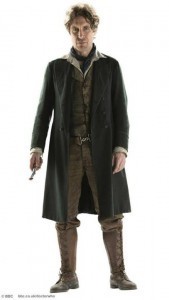 Ahem. Funnily enough, in response to this most excellent development, Big Finish are offering some of their work at special prices, so New Who & Old Who fans alike can check out who Charley, C’Rizz, Lucie, Tamsin and Molly all are. So I thought I’d put my outrageously dedicated Big Finish obsession to some use by making recommendations for those of you who’ve never heard a Big Finish before, and are now wanting to get to know the Eighth Doctor a little better.
Ahem. Funnily enough, in response to this most excellent development, Big Finish are offering some of their work at special prices, so New Who & Old Who fans alike can check out who Charley, C’Rizz, Lucie, Tamsin and Molly all are. So I thought I’d put my outrageously dedicated Big Finish obsession to some use by making recommendations for those of you who’ve never heard a Big Finish before, and are now wanting to get to know the Eighth Doctor a little better.
WHO IS CHARLEY POLLARD?
A feisty Edwardian adventuress who ran away from home in search of travel and excitement, and found the Doctor, played by the bubbly and joyous India Fisher (better known to Brits as the voice of Masterchef).
WHERE DO I START?
Storm Warning, Charley’s first story, in a 1930′s zeppelin about to crash, guest starring Gareth Thomas of Blake’s 7. The chemistry between Eight and Charley is adorable right from the start, and she soon puts a stop to him talking to himself.
Chimes of Midnight, a beautifully ghoulish, twisty-turny Rob Shearman creepfest which beautifully satirises Upstairs Downstairs (though can probably be listened to now as a pre-emptive Downton Abbey parody) and also shows Charley’s character off to great effect.
WHO IS C’RIZZ?
A traumatised chameleonic alien with slight socipathic tendencies. Played by Conrad Westmaas, his cynical tone counterbalances Charley’s pep and the Eighth Doctor’s flamboyant heroics to make a great TARDIS trio.
WHERE DO I START?
C’rizz’s first story, The Creed of the Kromon, is currently on special. But I’d much rather you got to know him in one of the really excellent later adventures, such as Other Lives set in the Great Exhibition of Crystal Palace, or the surreal steampunk wonder of Time Works by Steve Lyons. Sadly those two aren’t on special.
Lucie is the awesomest of awesomecakes. A sarcastic Blackpool secretary who calls the Eighth Doctor on his bullshit on a regular basis, mocks any hint of grandiosity, and still manages to be both heroic and empathetic, Lucie is the Donna of the audio adventures – only she’s from the North! Played by the spectacular Sheridan Smith, in adventures that were specifically designed to follow a more modern New Who format (40 min episodes) while also providing nostalgia callbacks to some of the best monsters and villains of the 1970′s, Lucie runs the gamut of companion experiences, with comedy, angst, epic space opera, and a whole pile of snark. Her friendship with the Eighth Doctor is truly special and she gets a zillion bonus points for not finding him remotely attractive. Oh and her stories are ALL on special right now.
WHERE DO I START?
You could just grab Blood of the Daleks and start from the beginning. As well as launching Lucie with a bang, this story features Hayley Atwell, AKA Peggy Carter from Captain America. Yes, really.
Other great Lucie stories to give you a taste of the character as well as the brilliance of the Eighth Doctor himself (which work completely as standalone stories) include:
Max Warp – Graeme Garden guest stars brilliantly in this great spaceships-and-murder-mystery comedy which is certainly not a futuristic parody of a certain incredibly popular TV show about cars. Also features Lucie’s memorable re-definition of the TARDIS as a shed.
The Zygon Who Fell To Earth – Steven Pacey (Tarrant from Blake’s 7) and Tim Brooke-Taylor guest star in this suburban re-invasion of the aliens everyone is going to be talking about when the upcoming anniversary episode screens. Romance, humour and a hint of tragedy, plus a domestic betrayal that will change things between the Doctor and Lucie forever.
WHO IS TAMSIN DREW?
Following Lucie Miller was a thankless task, and I’ll admit I never quite took to Tamsin, played by Niky Wardley, whose job is largely to show that not everyone is cut out to travel with the Doctor. Her story is epic, though, and not one you want to listen to all in the wrong order.
WHERE DO I START?
At the beginning, with the Eighth Doctor auditioning four potential companions, Apprentice-style in Situation Vacant. But if you plan to go any further with Tamsin after that one, I’d listen to the first three seasons of Lucie stories first. Trust me on this.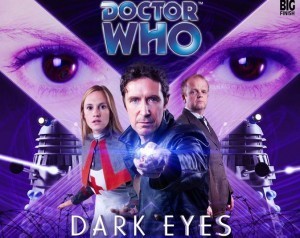 WHO IS MOLLY O’SULLIVAN?
WHO IS MOLLY O’SULLIVAN?
Molly is a fast-talking Irish maidservant who joined the nursing Voluntary Aid service with her aristocratic mistress during World War I – and in the midst of all the bloodshed and grim reality, found a Doctor who needed serious cheering up.
WHERE DO I START?
So far Molly has only appeared in the three-story box set Dark Eyes, which was intended as a soft reboot for the Big Finish Eighth Doctor, and a jumping on point for new listeners. If you want an Eighth Doctor who is a lot closer to the man you can see in Night of the Doctor (as opposed to the more light-hearted version which is closer to the performance of the TV Movie) then this is the best place to find him. They even redressed him in leather, though sadly we missed out on a scene where he formally embraces his new look. Bonus villain guest star: Toby Jones, though not playing the Dream Lord this time around.
There are two new Dark Eyes series to come starting next year though, so if you like Molly you can expect a lot more of her.
And guess what, Dark Eyes is on special too!
WHAT ELSE AM I MISSING?
The Eighth Doctor is reunited with Susan and gets to know his grandson in An Earthly Child which looks at what the Earth looks like a generation after The Dalek Invasion of Earth. Alex Campbell is played by Jake McGann, son of Paul!
Remember that time that the Fourth Doctor and Romana were supposed to have that adventure with Professor Chronotis in Shada but the Time Scoop in The Five Doctors prevented it? The Eighth Doctor kidnaps President Romana to make sure that they have the adventure they missed out on back in the 1970′s.
Mary Shelley, Byron, and the Eighth Doctor as Frankenstein’s monster in Mary’s Story. At only half an hour & 99p, this is probably one of the best stories to try first as it requires minimal financial or time investment if audio plays aren’t usually your thing.
AND WHAT ABOUT THE 50th ANNIVERSARY?
Once you’ve watched Night of the Doctor a dozen more times, check out the multi-Doctor Big Finish 50th anniversary extravaganza The Light At The End, which teams Eight and Charley up with Leela and Four, not to mention Six, Seven, Eight and even One, Two and Three getting in on the action. Plus Geoffrey Beevers as The Master. Joyous Doctor Who indulgence on a plate!
November 12, 2013
people actually concerned about sexism do not go around saying that women should shut their dumb faces about it
Look at me, raising my head up in the internet. Hello, internet! I’m a lot of words this month! I haven’t been doing my usual Friday Links while Nanoing, but there are a couple of things I wanted to make an exception for.
 Sarah Rees Brennan has written a really important essay on TheToast.net about being a woman in the publishing industry, or any industry that requires self promotion, and how differently the universe reacts to women’s self promotion. It’s sad but a must-read: A Female Author Talks About Sexism and Self-Promotion.
Sarah Rees Brennan has written a really important essay on TheToast.net about being a woman in the publishing industry, or any industry that requires self promotion, and how differently the universe reacts to women’s self promotion. It’s sad but a must-read: A Female Author Talks About Sexism and Self-Promotion.
So, women are often left in a situation where if they want to succeed, they have to promote themselves, via being a person on the internet. And then, people say: “Lady, when you promote yourself, it is bad.”
(Sarah Rees Brennan)
Malinda Lo has written a companion piece, also on TheToast.net, about her own experiences in self promotion as a queer woman, and how more mainstream events/promotions for her YA books about lesbians mean having to come out all over again: A Second Female Author Talks About Sexism and Self Promotion.
I don’t believe that creative individuals should have to grow thicker skins. I believe that if you’re out there creating art, you should make sure you’re as open and thin-skinned as possible, so that you can feel every damn thing that arises in you. You need to be able to fully experience those emotions so you can use them in your work, but only within reason. I draw the line at letting mean-spirited criticism into my mental space.
(Malinda Lo)
I really appreciate both Sarah and Malinda addressing these issues, and am very sad to see how much Sarah, in particular, is bracing herself for the backlash from her words as her essay draws to a close. It shouldn’t have to be like this for anyone.
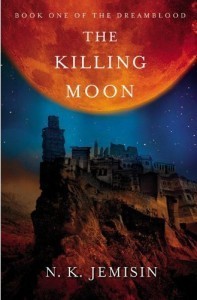 Also today, NK Jemisin has written a piece about the multi-award-nominated The Killing Moon and its critical response now as compared to the responses she saw to the book when she was originally trying to sell it as her first novel. Her story about trying to break into ‘the big 6′ publishers with a book that many saw as niche because she was a black writer writing fantasy novels about black characters, is a really important one to be aware of, and I have great respect for her ability to convey her anger and frustration about this as well as her pride in how far she has come.
Also today, NK Jemisin has written a piece about the multi-award-nominated The Killing Moon and its critical response now as compared to the responses she saw to the book when she was originally trying to sell it as her first novel. Her story about trying to break into ‘the big 6′ publishers with a book that many saw as niche because she was a black writer writing fantasy novels about black characters, is a really important one to be aware of, and I have great respect for her ability to convey her anger and frustration about this as well as her pride in how far she has come.
This ties back to what Sarah and Malinda were saying. If we can’t be proud of what we have achieved and tell people that without being labelled ‘bitches’ then we still have a LONG way to go.
Then as I looked around, I found other reasons to hope: Tananarive Due, Nalo Hopkinson, Nnedi Okorafor, Sheree Thomas; everywhere I looked in SFFdom, other black women were breaking in and making big, telling their stories in their voices to their questionable audiences. I wanted to be among those women. And one thing finally caused me to reject the idea of self-publishing: I wanted my book to be everywhere. I found Butler via the shelves of my public library, so I wanted kids like me to be able to find my work there just as easily. I wanted to be on the shelves in every chain store and independent shop, not just the ones that let me hand-sell them a few copies. I wanted foreign rights sales, which have made my work available in more than ten languages thus far. I wanted the possibility of getting onto school reading lists and college curricula. I wanted to be considered for awards I had heard of, and reviewed in publications the whole world would see.
(NK Jemisin)
Once you get back from reading all the clever things they have to say, I’ve got some gratuitous self-promotery things about meeeee to share with you! As in, all the things I would have been linking to/tweeting all month if I wasn’t bumping into walls from exhaustion thanks to my new 6am writing regime…
Check out those big sexy numbers. I officiall had my best writing month all year by the 7th November, and luckily am keeping up momentum! It’s so nice to be writing a novel again.
My writing is working well this month thanks to the revolutionary concept of getting up early and getting my words done before breakfast & the school run and, more importantly, before I can talk myself out of writing them. I think perhaps I might have hit on a way to get writing done in the school holidays as well. Life changing stuff!
My Creature Court books (well, the first two books of the trilogy) are available super cheap at Booktopia right now – so it’s a good chance to get hold of them! If you haven’t used Booktopia before, they do charge shipping, but regularly offer free shipping deals to regular customers, and they are rapidly becoming the most established Australian online bookstore.
 Speaking of my books, I haven’t had a chance before now to link to Cheryl’s post about my Mocklore Chronicles at Wizard’s Tower. Apparently there are people in Australia who have seen the print copy of Ink Black Magic! I am not one of them and neither is my publisher! But there are people! (word has it there are copies at Pulp Fiction Books in Brisbane – run don’t walk & score yourself one)
Speaking of my books, I haven’t had a chance before now to link to Cheryl’s post about my Mocklore Chronicles at Wizard’s Tower. Apparently there are people in Australia who have seen the print copy of Ink Black Magic! I am not one of them and neither is my publisher! But there are people! (word has it there are copies at Pulp Fiction Books in Brisbane – run don’t walk & score yourself one)
I would also be remiss for not pointing out the Kindle edition of Ink Black Magic on the brand new Australian Amazon page. If anyone who gets hold of a copy would care to review it either there or on Goodreads, that would most definitely not suck. xxx
More book news! I am super excited to announce that I will be appearing in the Mammoth Book of Gaslit Romance, with a reprint of Lamia Victoriana, my Love & Romanpunk story based (VERY LOOSELY) on the life of Mary Shelley’s sister Fanny. I’m so excited to be appearing in a Mammoth Book of Anything! I have so many on my shelves from my teen years. This one has been edited by Ekaterina Sedia and it has a fantastic TOC.
I’m also returning to the tempting world of editing myself thanks to a project dreamed up by Tehani of Fablecroft – calls are open now for story pitches for a historical anthology about Cranky Ladies of History. It’s a super exciting project and I hope many of you will be sending us stories.
OK, back to work now. See you in December!
November 10, 2013
Watching New Who: The Hungry Earth/Cold Blood
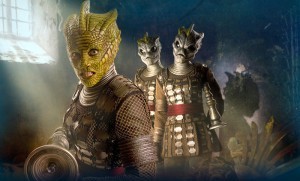 Tansy and Tehani love this season so much we’re making David do more work – we’re changing up our usual plan and reviewing each episode, in sets of two.
Tansy and Tehani love this season so much we’re making David do more work – we’re changing up our usual plan and reviewing each episode, in sets of two.
TEHANI:
Well, I’d completely forgotten what this one was about until Tansy nudged me violently. And so I dove into rewatching with quiet joy, which I can’t talk at all about because of David (hurry up and CATCH UP!) 
Looking back, I can’t quite tell why I would have forgotten it, because there’s some great stuff here. I have a feeling I confused it in my head with “The Rebel Flesh/The Almost People” from season six, which is silly because I like this loads better…
TANSY:
This two parter, and “Cold Blood” in particular, is my least favourite part of the season. There’s a lot to like here – and I do like many aspects, particularly the return and redesign of the Silurians, a lot of the dialogue, and the chilling bookend of Amy and Rory waving to themselves, and then Amy alone after Rory has disappeared. Acting highlights include Meera Syal as Nasreen Chaudry (blatantly auditioning for a run in the TARDIS) and the lovely Stephen Moore as the Silurian leader. Not to mention Neve McIntosh playing two distinct characters excellently beneath what could be quite unforgiving prosthetics.
However…
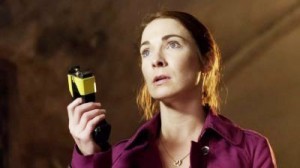 The character of Ambrose is a big problem for me, largely because she is written and played so harshly that she is a) deeply unlikeable and b) consistently stupid. In fact, there is a term for her role in this story – the stupid ball – which means she is forced by the script to act in a stupid way, in order to make the plot work.
The character of Ambrose is a big problem for me, largely because she is written and played so harshly that she is a) deeply unlikeable and b) consistently stupid. In fact, there is a term for her role in this story – the stupid ball – which means she is forced by the script to act in a stupid way, in order to make the plot work.
This might be less grating to me if it wasn’t for the fact that the other glaring problem of the story to me is also gendered. I quite like the idea of the military caste of the Silurians being represented by the women and the science/thinky caste being men, BUT what we get in the script is the female Silurians being violent and irrational and the male Silurians being calm, sensible and charming.
TEHANI:
Darn it Tansy, I was so busy being impressed by the way the Silurian society worked I didn’t consider all that…
TANSY:
This combined with the violent and irrational Ambrose representing humans is … a bit icky to me. Even worse, the Doctor notes and condemns the irrational violence of Ambrose and the female Silurians, but embraces Dr Malokeh as a brother in science and generally finds him adorable despite the fact that Dr Malokeh has basically been quietly and gently torturing humans in the name of science.
TEHANI:
But not the children! 
TANSY:
The whole thing leaves a bad taste in my mouth.
TEHANI:
I’m not sure the men looked completely rosy though. Tony does suggest he’d betray humanity if Alaya cures him, and he also suggests dissecting her for defence purposes…
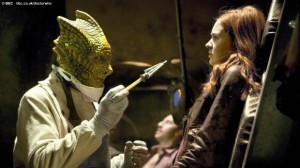 DAVID:
DAVID:
When I was making notes about this story, I wrote:
“Don’t forget Malokeh was dissecting humans!”
Admittedly I spelt his name wrong, but the point remains. He had been dissecting prisoners and, as Tansy points out, he basically gets a free pass from the Doctor.
TEHANI:
I agree that the Doctor gives him a free pass, but he also gives Ambrose a free pass, despite the fact her actions led to such a terrible outcome (for Rory at least, if not necessarily the Silurians, because I kind of think there was no way almost-present-day society would have accepted them – we can’t even accept each other  ). He wasn’t nearly so angry at her as I expected, given what happened.
). He wasn’t nearly so angry at her as I expected, given what happened.
TANSY:
He’s pretty scathing, I thought, and the scene at the end he appears quite contemptuous towards her, making it clear that her job is to make up for what she did by helping her son on his quest to “get humans ready” for the Silurians. So she doesn’t even get to redeem herself directly, either, only through her child!
DAVID:
Something I found interesting about this episode, though, was the many parallels between this story and the first appearance of the Silurians. You have the more moderate leader trying to rein in the younger hot head, the blinkered viewpoints of some of the key humans, the Doctor desperately trying to keep the peace, an accidental death derailing the best efforts of those trying to find common ground between the two species – and, of course, the Doctor enraged by humanity giving into its worst instincts and making his displeasure very clear. Obviously they invert some of the situations, but there are a lot of similarities.
TANSY:
Yes, I quite like that part. The actual shape of the story I don’t mind at all – even the mining set has a bit of the Pertwee vibe about it. And I haven’t forgotten that the Doctor being patronising about humans and violence and exhibiting double standards depending on how much he likes you is also a carry over from the Classic series.
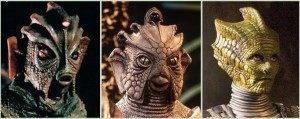 Likewise, the Silurians here are given a much more complex and inclusive society than the rather dull men in rubber suits from the old days.
Likewise, the Silurians here are given a much more complex and inclusive society than the rather dull men in rubber suits from the old days.
TEHANI:
See, I have no idea what you’re talking about! I figured Silurians had appeared in the classic series, because it’s specifically discussed, but I’ve been tricked like that before!
DAVID:
I didn’t really understand the complete redesign of the Silurians, though I do think they looked good, I would have preferred to see an update of the classic design. I did like the subtle dig at the dodgy dating of the species, though!
TEHANI:
I loved the prosthetics! Fantastic makeup and design, that’s for sure.
TANSY:
And a brilliant portrayal by Neve McIntosh as the female Silurians which, cough, will have far greater and more awesome ramifications.
TEHANI:
Indeed…  I thought Amy and Rory were both excellent in this too – Amy once more charging into danger and poking her fingers in where she probably shouldn’t, and Rory being completely the “best of humanity” the Doctor is aiming for.
I thought Amy and Rory were both excellent in this too – Amy once more charging into danger and poking her fingers in where she probably shouldn’t, and Rory being completely the “best of humanity” the Doctor is aiming for.
TANSY:
Yep, shame they killed Rory off at this point, he had real potential as a great companion. The scene in the TARDIS with Amy trying and failing to save his memory is one of the most genuinely emotionally excellent moments of Doctor Who. Chilling stuff.
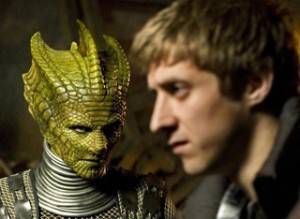 TEHANI:
TEHANI:
Yes, a shame Rory is completely dead and gone now. Very sad. But it is absolutely a great scene, agreed.
DAVID:
I thought the scenes where you can see the couple in the distance, and then the changes, particularly effective.
TEHANI:
But completely sad, right? Cos Rory’s dead, don’t you know? I just watched a bunch of Classic Who and it’s quite amazing how quickly they get over the loss of a companion – wonder how quickly Amy and the Doctor will move on…
PREVIOUS “New Who In Conversations”
“Rose”, S01E01
“Dalek”, S01E06
“Father’s Day, S01E08
“The Empty Child/The Doctor Dances”, S01E09/10
“Bad Wolf/The Parting of the Ways”, S01E12/13
Series One Report Card – David, Tansy, Tehani
“The Christmas Invasion,” 2005 Christmas special
“New Earth”, S02E01
“School Reunion,” S02E03
“The Girl in the Fireplace”, S02E04
“Rise of the Cybermen/Age of Steel”, S02E05/06
Army of Ghosts/Doomsday, S02E12/13
Series Two Report Cards: David, Tehani, Tansy
“The Runaway Bride”, 2006 Christmas Special
“Smith and Jones”, S03E01
The Shakespeare Code & Gridlock, S0302-03
Human Nature/The Family of Blood S0308-09
Blink S0310
Utopia / The Sound of Drums / Last of the Timelords S0311-13
“Voyage of the Damned,” 2007 Christmas Special
Series 3 Report Cards: David, Tehani, Tansy
Partners in Crime, S0401
The Sontaran Stratagem/The Poison Sky, S0405 S0406
Silence in the Library/Forest of the Dead, S0408 S0409
Turn Left, S0411
The Stolen Earth/Journey’s End, SO412-13
Series 4 Report Cards: Tansy, Tehani, David
The Eleventh Hour, S0501
The Beast Below/Victory of the Daleks, S0502-3
The Time of Angels/Flesh and Stone
Vampires of Venice/Amy’s Choice, S0504-5
November 4, 2013
Devoured by Book
So the blog has been a bit quiet of late and bound to continue so. Shhh! I’m writing a book!
NaNoWriMo is doing what it’s kinda supposed to do, as far as I’m concerned – it’s kicking me back into habitual writing. I’ve been struggling all year with time shrinkage and my various parental etc (so much et cetera!) responsibilities, and not getting much of anything done. But I gritted my teeth and started this 6am thing (most days). The fact that it started working early on did, of course, spur me on. Funny how success tends to be encouraging!
Slowly, slowly, I’m remembering how to write books. More specifically, how *I* write books. I tap into my barely-veiled addictive personality, I challenge myself, and I turn up to the damn chair. So far, so good.
The first time I did Nano, I blogged nearly every day. Not only those damned wordcount bars, but reflections on what I was writing, and how I write. The second year (which was 2009) I blogged everywhich way, including possible typing with my ears. Words poured everywhere because I was writing WITH a three month old baby, and the more fiction I wrote, the more I wanted to blog as well.
I suspect that won’t be happening this time. I’ve been giving a lot of attention to my blog lately and now having great fun with the enormous secret which is the book I can read and no one else can – the one I’m writing!
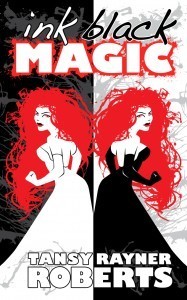 But I have also been neglecting talking about another important book in my life – Ink Black Magic, the new Mocklore novel is out now as an ebook from Fablecroft! It’s available on the Kindle and also from Wizard’s Tower Books which means you can get a copy BEFORE YOU FINISH READING THIS BLOG POST.
But I have also been neglecting talking about another important book in my life – Ink Black Magic, the new Mocklore novel is out now as an ebook from Fablecroft! It’s available on the Kindle and also from Wizard’s Tower Books which means you can get a copy BEFORE YOU FINISH READING THIS BLOG POST.
You can also pre-order a print copy direct from the publisher.
The cover is so pretty, and I am excited to see what it will look like as a solid book!
For those of you who read the original two Mocklore novels, Splashdance Silver and Liquid Gold, this may well be the third book you’ve been waiting for (sadly it won’t make a matching set but at least you can HAVE it finally). If you haven’t read those books, then Ink Black Magic was intended to be a new start for my Mocklore Chronicles – it was written for new readers as much as old, and I hope that if comic fantasy with pirates, witches and chaotic magic sounds like fun to you, that you’ll enjoy it as a standalone novel.
On the other hand for those of you who are completists, Splashdance Silver and Liquid Gold are both now available as e-editions, and Tehani of Fablecroft has been nice enough to put out Splashdance as a 99 cent edition (until Dec 31 2013 only!) – and 62 pence in the UK.
So this is the month for BOOKS BOOKS BOOKS, the making of, the selling of, and hopefully some buying too.
But mostly head down, writing. Because sometimes you just have to immerse yourself in steampunk fairies and knightly engineers and magic cat disasters and earnest girl scientists and houses that want to kill boys, and evil enchantresses, and warped Victoriana, until you’ve made the world a slightly better place.
Not this world, obviously. That world. The one I’m working in when all you can hear is the clicka-click clicka-click of my keyboard.
Clicka-click
Clicka-click
Writing now
October 29, 2013
25 Urban Fantasies! (or: The Angry Trousers Treatise)
My co-conspirators and their lists of 25 Urban Fantasy Books:
Liz Bourke
Jared Shurin
Justin Landon
Are you sitting comfortably? Then I’ll begin.
What is urban fantasy? A lot of people get stuck on this question as if it’s difficult. In particular, there are often valiant attempts to separate out the “old school Charles De Lint” type of urban fantasy with the “new sexy” type of urban fantasy. Usually the people who try to make this distinction are in favour of De Lint, and not in favour of angry ladies with leather trousers on book covers.
I believe though that these are all part of the same thing. Sure, when many people say “urban fantasy” these days they tend to think about those angry ladies in leather trousers, having lots of sex with monstrous men, and kicking butt.
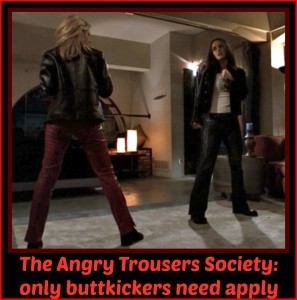 There’s even an alternative take on the sub-genre, paranormal romance, which allows readers who like their monstrous hot men and angry ladies in leather trousers fiction to have happy endings to go over there and enjoy it without getting any vampire smut in the way of the sub genre that men occasionally like to read or write.
There’s even an alternative take on the sub-genre, paranormal romance, which allows readers who like their monstrous hot men and angry ladies in leather trousers fiction to have happy endings to go over there and enjoy it without getting any vampire smut in the way of the sub genre that men occasionally like to read or write.
Luckily, no one puts vampire smut in the corner. Not forever, anyway…
Yes, there are gender issues with how people talk about urban fantasy. Not least of which is the way that the ‘newfangled smexy’ version of the genre is often discussed entirely in the context of the covers, by people who have never read the books themselves, but are quite sure that the ones by Charles De Lint are better. (this is another thing that urban fantasy has in common with romance)
Women write a lot of urban fantasy. Urban fantasy tends to be more relaxed about sexual content than a lot of otherworld fantasy, possibly because of the large numbers of women writing and reading it, but also possibly because it’s set in our reality and no one’s cod-medieval morals are getting in the way. It also has a massive presence in the YA field, with some of the most fascinating and inventive examples of modern urban fantasy to be found on the shelf aimed at a teenage audience – where it can be thoroughly ignored by the same critics who get all judgy about angry trousers.
Ahem. But let’s get back to what urban fantasy actually is. Alternative history with magic. That’s it. That’s why the Charles De Lint books and the Charlaine Harris books and the elves on motorcycles and the Norse gods in suburbia and the sexy angry leather trousers kicking butt are all part of the same thing.
Sometimes, urban fantasy utilises tropes from other genres – especially from the paranormal end of the horror genre, and also from crime. Even the format of the books tends towards the series rather than serial, closer to crime than fantasy. But some urban fantasy doesn’t have crime plots OR horror tropes. Some of it is about the collision of the magical with the mundane, in a world that looks a lot like ours, but has a few key differences.
Alt history. With magic.
Here are 25 examples of the good stuff that I like about this complex and wildly full-of-possibilities genre. My list does not happen to have any novels on it by Charlaine Harris or Charles De Lint. There may be a few book covers with angry trousers.
[For more of Tansy ranting about angry trousers, check out the recent episode of Galactic Suburbia]
25 URBAN FANTASIES
1. The Almighty Johnsons (2011-2013)
I probably should have left this one until the end of the list because chronologically it’s one of the most recent urban fantasies I want to talk about but I can’t wait because OMG this show.
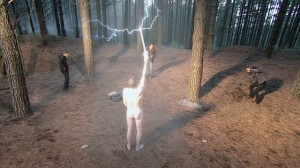 I’m halfway through watching the third season right now and completely in love with it. The premise is that the Norse gods fled to New Zealand years ago and keep being reborn into new human bodies, often within the same families, with limited powers. If Odin ever returns and finds his eternal wife the Frigg, then the gods will be restored to former glories…
I’m halfway through watching the third season right now and completely in love with it. The premise is that the Norse gods fled to New Zealand years ago and keep being reborn into new human bodies, often within the same families, with limited powers. If Odin ever returns and finds his eternal wife the Frigg, then the gods will be restored to former glories…
This story has everything – domestic kitchen sink drama about families and share houses, sex and magic, witty dialogue, suffering angsty heroes and laid-back Antipodean awesomeness. It’s suburban fantasy at its finest, and defines the urban fantasy genre for me like no other story ever has.
2. Neverwhere, Neil Gaiman (BBC Radio 2013)
Before, I’ve appreciated the premise of this story more than its execution – I didn’t mind the TV series but never saw all of it, and quite enjoyed the book. But it was the ideas within the story that I fell in love with: the concept of an underground magical reality which gives logical explanations for some of the more fanciful London Tube station names like Earl’s Court, Old Bailey and the Angel Islington.
At its heart, this is the sort of thing that urban fantasy is supposed to do – peeling up our mundane reality to show the magic lurking beneath.
Famously, Gaiman wrote the novel to assuage his own disappointment at the rendition of some of the special effects in the TV series, but it’s with the the recent BBC Radio adaptation of this work that Neverwhere really comes to life. James McAvoy, Natalie Dormer, Anthony Head, Romola Garai, Benedict Cumberbatch, Bernard Cribbins and Christopher Lee bring the marvellous characters to life and evoke the sheer absurdity that our hero is dragged into when he ‘falls through the cracks.’
3. Diana Tregarde Investigates, Mercedes Lackey (1989-1991)
Lackey’s three Diana Tregarde novels (Burning Water, Children of the Night, Jinx High) were probably the first books I read which set up what we think of now as the urban fantasy standard – a powerful female character living and working in a city who is called in as an expert to deal with paranormal crimes. I really liked Diana and wished there was more of this series – fifteen years before its time, perhaps?
Aztec gods and possessed rock bands made the first two novels entertaining, but I have a particular soft spot for Jinx High, in which an older Diana has to solve a high school paranormal mystery. I’m pretty sure a few bits of this were stolen for season one of Buffy, just saying.
4. Guilty Pleasures, Laurell K Hamilton (1993)
No one can deny the vital role that Hamilton has had in popularising the urban fantasy genre – and the early Anita Blake novels are fantastic examples of it. I remember being blown away by her first novel, the vivid ensemble characters surrounding Anita (oh Edward the assassin, I will always love you), and the great procedural-with-vampires-and-zombies plot. More importantly, these books have an elegant approach to world building, demonstrating that urban fantasy is simply another form of good old fashioned alt history. Here, the world is just like ours except that everyone knows vampires exist, and they have the vote now. GO.
The books are actually a lot more complicated than that, but I really appreciated the way that they delved into what the real life, pragmatic consequences might be if you could raise zombies from the dead. So, zombie raising becomes an essential legal tool in dealing with will disputes, vampire clubs become the trendy location for hen nights, and what workplace rights are lycanthropes entitled to?
The Anita Blake books, especially early on, are brilliant examples of police procedurals with magic, but Laurell K also added clever domestic details that showed the mundane, everyday ramifications of all the monsters and magic. All told with a saucy modern attitude that has been much copied in the decades that followed.
As with the Diana Tregarde series, this book from 1993 is indistinguishable from what we perceived to be urban fantasy today – a note for those of you who continue to claim that smexy angry trousers ladies are a new phenomenon. Anita’s trousers were plenty angry back in the early 90′s.
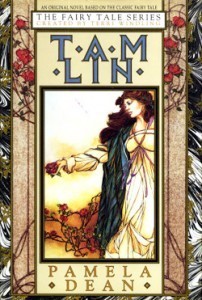 5. Tam Lin, Pamela Dean (1991)
5. Tam Lin, Pamela Dean (1991)
Part of the reason I get a bit cross about the pre-angry-trousers school of magical mundanity AKA urban fantasy being defined as “lovely magical realist novels by Charles De Lint” is that the defining novel of this subset of urban fantasy for me is and always will be Tam Lin, by Pamela Dean.
Pamela Dean effectively ruined me for Charles De Lint, just as she ruined me for university. I’m not sorry.
This is one of the most perfect novels ever written for me. It’s about how college is magic, and a lot of that magic is about autumn leaves and first love and Shakespeare classes and birth control and some of it is about sinister professors and faery lore and oh did you forget that the title TELLS YOU this is a novel about that famous old ballad of stolen young men and heroic young pregnant women?
Every time I read this book, I want it never to end. The magic is subtle and creeping until you turn around and realise it was there all along, in everything, and actually this is a book about a completely different world than you thought it was.
6. Fire & Hemlock, Diana Wynne Jones (1985)
I’ve always been a little bit discombobulated by the fact that two of my very favourite novels are based on the same ballad. This is the other Tam Lin story of my heart.
Most of Diana Wynne Jones’ books are urban fantasies of one kind or another, except the occasional flirtations with portal fantasies, otherworld fantasy, and science fiction. But so many of her best and most memorable works are the ones which are set in ordinary kitchens and schools and families and suddenly the significance of THAT name or THIS plot twist falls into place and you realise she’s done it all over again, she’s seduced you into reading two different stories at once.
Fire and Hemlock does a marvellous job of showing just how weird and unbelievable it would be if there was magic in the real world, and also how difficult and awkward and embarrassing. It’s also about love and friendship and embracing the epic, and how stories and magic are always wrapped up in each other.
It’s lovely.
7. Shadows Fall, Simon R Green (1994)
This is the town where legends go to die. Well, no, in many cases it’s where the legends go after they die, while waiting to be forgotten.
I don’t actually like this novel. I don’t have the same love for it that I do for Green’s epic fantasies and magical mysteries and his extraordinary space opera.
I have read this novel a LOT of times considering I don’t like it very much. Shadows Fall is a strange mishmash of folklore and superheroes, cartoon characters and deep psychological trauma. Most definitely, it is a novel about the collision of the magical and the mundane, and the messy after effects. Simon R Green has written other, more conventional urban fantasy – Drinking Midnight Wine is a classic example of all the tropes and traditions done very well – but Shadows Fall is the one that kicked me in the teeth harder with a version of the “real world” that I never ever want to visit.
8. Growing Rich, Fay Weldon (1992)
Fay Weldon has been writing speculative fiction for decades, and she rarely gets the attention for it that other lit writers like Margaret Atwood do. To me her works have been important because of how many of them get adapted, often into great TV series. The Cloning of Joanna May, for instance, is a brilliant and creepy piece of science fiction made even better by the addition of Patricia Hodge.
I first discovered Growing Rich thanks to a mini-series in 1992 featuring Martin Kemp as “the Driver.” As with many other Weldon TV adaptations, I just had to pick up the novel. Growing Rich is the story of three teenage girls who live in a middle of nowhere town (urban fantasy: not always in cities) in East Anglia, and have the misfortune to be vocalising their fed-upness when the Devil is driving by…
Their fortunes then rise and crash depending on how grateful they are to the sinister dark man driving the limo – but what do they actually want out of life? Babies, glamour, true love, honest work? A creepy, sensational novel without an angry pair of leather trousers in sight – though it does have a very feisty red dress.
A coming of age novel with rebellion and magic.
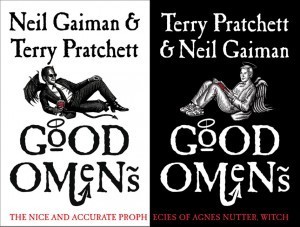 9. Good Omens, Neil Gaiman and Terry Pratchett (1990)
9. Good Omens, Neil Gaiman and Terry Pratchett (1990)
Yes, here’s Neil Gaiman again. I love this book still, so much. There was a lot of funny urban fantasy around in the 90’s (and wow, this list is very early 90′s so far, yes?). I also very much enjoyed a bunch of books by Esther Friesner, and the early works of Robert Rankin and Tom Holt – but this one takes the cake, the biscuit and the cup of tea.
Angels, devils, the Anti-Christ, the Four Horsemen of the Apocalypse, the plucky kids, the earnest witch, and a powerful sense of the history of our real actual world, colliding with some of our most potent mythic forces. I like the work of Gaiman generally (though not as avidly as most of his fans), and I adore almost everything that Terry Pratchett has ever written, but there is something really bizarrely wonderful about this combination of both their talents. The fact that Crowley and Aziraphale have a devoted slash following only makes revising this book even better.
10. Buffy the Vampire Slayer (1997-2003)
Okay, here we go. You really can’t talk about urban fantasy without Buffy, just as you can’t talk about children’s fantasy these days without addressing Harry Potter. It’s worth noting though that the spin off series Angel probably has more in common with a large majority of the urban fantasy genre in books… his trousers are pretty damn angry.
But Buffy was important in so many ways, a seminal text at the heart of the trope-that-became-a-subgenre: the modern girl warrior who is far more dangerous than she appears. There were popular urban fantasies before this show – Laurell K was both selling very well by this point, Charlaine Harris’ Sookie Stackhouse arrived a little more than halfway through the TV run and hey, let’s talk about Anne Rice for a minute – but this is the point that vampires tipped over into the mainstream.
Whedon’s focus on the metaphor ‘high school is a horror movie’ for the first three years, followed by ‘life basically is also a horror movie and being grown up sucks a bit more than you thought it would when you were suffering in high school’ for four years, gave a sense of reality to the monsters and villains that tore through Buffy’s life in a regular basis.
But put simply – we got a coming of age hero super myth, packed into the form of a tiny blonde girl, with a lot of witty dialogue. It was awesome, and it is a LONG time since we’ve seen as many female-led action TV shows as we had in the late 90’s, early 00’s. Buffy’s legacy did not, sadly, create a revolution as to the kinds of heroes people expected on their screens (though after this point any woman in an action/horror movie not kicking butt herself was open to widespread derision and scorn) but her legacy can be found very strongly in all the books that exploded the market in the early 21st century, to the point that ‘urban fantasy’ started to mean ‘story with crime, magic and a female action hero’ to many, many readers.
Interesting, isn’t it, that it wasn’t horror fiction that changed with the arrival of Buffy as the heroine who killed some monsters, and kissed others.
11. Locked in Time, Lois Duncan (1985)
Before Buffy, there was Lois Duncan, writing horror suspense for teenage readers. What has horror suspense got to do with urban fantasy? Quite a lot, actually! As a sub-genre, it borrows a lot of tropes from horror fiction, though the focus is often more on strength, sassiness and getting shit done rather than fear and dread. The Buffy mode, in other words.
But the kind of books written by Lois Duncan – and let’s face it, Stephen King, Anne Rice, and others- are part of the heritage that culminated with Buffy and then transformed into a thriving sub-genre of fiction that everyone liked to pretend was new and fresh and hadn’t been there through the entire 90′s.
Locked in Time is one of many Duncan novels with which I scared myself silly as a pre-teen. Nore’s father remarries unexpectedly, to a woman who seems far too young to have teenage children of her own. Magic, creepiness, domesticity and power all collide in this story of a world where supernatural forces bleed into everyday life. It’s gothic, it’s horror, and if it had more of a sense of humour about those things it would be far more obviously an ancestor of Buffy and the angry trousers that came after her…
12. Sunshine, Robin McKinley (2003)
Robin McKinley is an author of marvellous, soul-renewing fairy tale novels. She changed the way I looked at Beauty and the Beast and Sleeping Beauty, and her Deerskin is one of the most heartbreaking (and yet ultimately satisfying) novels I’ve ever read.
But Sunshine did something else. McKinley she addressed the vampire-slayer-paranormal-romance tropes that were only just beginning to become mainstream in the wake of Buffy’s popularity, and added a healthy dose of the same thing she added to her fairytales: pragmatism, real world authenticity, a dash of cynicism to counter all that romantic claptrap, and a heroine you really wanted to hang out with. And not just because she makes really awesome bread and pastries.
13. “Magic For Beginners,”Kelly Link (2005)
This novella is one of my favourite pieces of Kelly Link’s writing – and yes, another piece of urban fantasy in conversation with Buffy. Seminal text, I believe I said?
Link’s work is often described as magical realism rather than fantasy, but despite her writing style being more traditionally literary, almost everything she writes engages with genre tropes of some kind. “Magic for Beginners” is about fandom and fannishness, with teenagers obsessively tracking a randomly-appearing TV Show called “the Library”. It speaks to any love of any cult TV but engages so thoroughly with Buffy that it’s hard to ignore those aspects. If Buffy was a literary novella, it would be this. And while pretty much anything Link writes set in our world could ultimately be read as urban fantasy (“The Faery Handbag” is another strong contender) this one remains the piece that I would choose as a teaching tool about what urban fantasy is, and can be.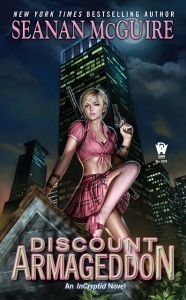 14. Discount Armageddon, Seanan McGuire (2012)
14. Discount Armageddon, Seanan McGuire (2012)
This book is what I actually want urban fantasy to be now, in the second decade of the 21st century, nearly 20 years after I first read Anita Blake and, let’s face it, nearly a decade after Buffy ended. Great world building, an enjoyable heroine, and a touch less of the angst-me-vampire schtick that is feeling pretty tired. Verity is a ballroom dancer and parkour fanatic, from a long family line of monster-fighters who prefer to keep themselves as anonymous as possible. I love the fact that even in the face of, well, armageddon-sized plot drama, this novel is packed with friendships, banter and comedy mice. Comedy mice, people!
15. Fruits Basket, Natsuki Takaya (1999-2006)
Most of the manga I have read is actually urban fantasy. Adding magical sparkles to an ordinary real world set up (especially schools) is par for the course, and Magical Girl stories like Sailor Moon rely on that collision of sparkles, epic heroism, romance, and having to do your homework while saving the world.
Fruits Basket is my favourite, and to date is the only 20+ volume manga series I have read from beginning to end. It’s the story of a homeless girl who is taken in by a “Family” that just get weirder and weirder the more she gets to know them, and is packed with all those fun things that western literature mostly lacks, like an abundance of genderqueer characters, and an unabashed sentimentality. Also boys that turn into cats, which is a trope I’m quite fond of.
In Fruits Basket, the epic happenings are all closely tied to domestic concerns and the people you care about, so every magical disaster really does feel like the end of the world…
16. Ultimate Spider-Man, Brian Michael Bendis (writer), Mark Bagley & Stuart Immonen (pencils) (2000 – 2009)
Superhero comics, also urban fantasy. Yeah yeah, Superman and Kryptonite, mutations, whatever, superheroes are mostly not science fiction.
Some superhero comics, it has to be said, feel more like urban fantasy than others. And that’s where Ultimate Spider-Man comes in. Round about the time Buffy dropped out of college, this series launched the Marvel ‘Ultimate’ line in which classic characters and storylines were rebooted into a fresh, more contemporary universe, allowing them to compress decades of plot lines and to produce stories with a fresher and more contemporary feel. Much like Buffy, the 21st century teenage superhero Peter Parker juggled home life, school and other practical responsibilities along with his heroics. Angst, suffering, high school metaphors and banter ensued. A great ensemble cast including some fantastic female characters make this an intense and self-contained superhero reading experience. In particular, the Ultimate Gwen Stacy, Mary Jane and Aunt May feel far more realised and modern to me than the versions in the ‘original’ universe which have some serious 1960’s baggage still lingering around them. Kitty Pryde, however, is awesome in all universes.
Honourable mentions for other great superhero comics that read like urban fantasy include Dan Slott’s She-Hulk, Joss Whedon’s Astonishing X-Men, all Justice League comics from 1987-1995, and Gail Simone’s Birds of Prey. Kelly-Sue Deconnick’s Captain Marvel, though, is definitely science fiction.
17. Bad Power, Deborah Biancotti (2012)
Think you hate superheroes? They probably hate you, too.
So many authors have tried to resurrect the superhero genre outside its traditional format, but you just can’t replicate the same colour and dynamic oomph in prose. Biancotti, in this elegant short story suite, didn’t try to do that at all. Instead she took the ‘what if some metahumans could do special things’ trope and turned it into a series of dark, edgy urban fantasy pieces about suicides, immortality and missing children. Brilliant stuff.
18. Moonshine, Alaya Dawn Johnson (2010)
So here’s why we call it urban fantasy and not contemporary fantasy, even though it doesn’t ALWAYS have a city convenient to the story. Urban fantasy doesn’t have to be set in the present day. Controversial? Eh.
Look at Moonshine, one of my favourite recent vampire novels. Johnson has shaped her story entirely around the urban fantasy mode – a heroine who is ‘different’ to those around her (in this case a social justice campaigner in 1920’s New York), a charming paranormal gentleman, and a strong alt history involving magical creatures. Yay vampire mob bosses!
The fact that it’s set nearly a century ago doesn’t take anything away from urban fantasy – rather, it adds to it.
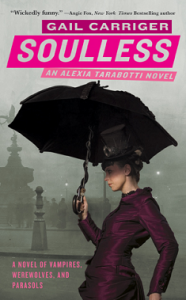 19. Soulless, Gail Carriger (2009)
19. Soulless, Gail Carriger (2009)
And of course then there’s the Parasol Protectorate. Sure, steampunk, whatever. You just can’t discuss urban fantasy as a modern, adapting genre, without including the bestselling superpower that is the tea-and-parasol obsessed Gail Carriger. (Well okay I am doing this without Charlaine Harris or True Blood but honestly, we only have 25!)
Brilliant world building that can be conveyed simply, romantic subplots, monsters galore and oh, battle accessories. Also a heroine who is so special, she literally does not have a soul. Based strongly on Victorian superstition with a dash of contemporary kick, the Alexia Tarabotti stories are what urban fantasy is all about. In petticoats.
20. The Diviners, Libba Bray (2012)
I will admit to having been disappointed in this novel at first, largely because it was teased ahead of time as “Zelda Fitzgerald and Dorothy Parker investigate paranormal monsters” and I was kind of hoping that was literally a description of the book’s contents. The lack of Zelda herself is however where the disappointment ends – this is a massive tome which has all the monsters-and-flappers goodness I was craving, plus it’s set around a lovely museum and I am a bit soppy about such things. Can you believe I got two 1920’s books into this list?
21. The Confessions of Dorian Gray, various authors,
Big Finish Productions (2012-2013)
Audio plays again! There have been two seasons in this magnificent series of very short plays based on the simple premise that Oscar Wilde’s book The Picture of Dorian Gray was about a real person, and that he did not in fact die at the end – Wilde included that plot twist as something of a kindness.
The plays are scattered back and forth through the late 19, entire 20th and early 21st centuries, each bringing to life an incident in Dorian’s long, selfish life. Ghosts gather, monsters lurk, and beautiful men and women drift through his fingers. There is in fact a Dorothy Parker story – in which the ageing lady is very sharp about the fact that the lovely young man from her youth hasn’t aged a day, but that doesn’t stop her solving a murder mystery with him! There’s also a 60’s rock music story, a modern stockbroker story, a Blitz story… oh and of particular note, a Sherlock Holmes crossover Christmas Special.
Alexander Vlahos has an amazing voice, and plays the protagonist Dorian with a soulful angst that is probably more human and appealing than the original character deserves. These bite-sized plays, usually only featuring two or three voice actors, are grim, bittersweet and witty all at once, building up the life of a ‘youthful’ immortal over more than a century while poking holes in any romanticism you might have about such a creature.
22. Guardian of the Dead, Karen Healey (2011)
I haven’t chosen many Antipodean examples of the genre, largely because there are fewer to choose from outside US publishers (I have left out quite a few, some by dear friends, sorry about that! So many books to talk about). Guardian of the Dead is quite possibly the first book I ever read that was set in New Zealand. I did read a few Margaret Mahy books as a kid and some might have been set there instead of Australia without me realising, but this was the first one I was conscious of.
For context, this is basically like if you were American and had never read anything set in Canada, ever.
Guardian of the Dead does a fantastic job (as far as I can tell) of showing the blend of cultures and myths that are prevalent in New Zealand, and bringing out the supernatural implications of those myths, while addressing some of the problematic elements of, you know, being a white author writing about Maori legends, etc. I also appreciated the diversity of the ensemble from a racial point of view, as well as with the fat female protagonist (SO RARE) and a very sympathetic asexual character.
23. Rampant (Killer Unicorns #1), Diana Peterfreund (2009)
Because, come on. Killer unicorns.
There are many things to love about this series which sadly only consists thus far of two novels though I have also enjoyed the many short stories Peterfreund has used to build up the history of her world. The heroine, Astrid, has more than a shade of Buffy about her at the beginning, but she becomes her own person very quickly, and it’s notable that she isn’t ‘the Chosen one’ but one of a whole team of Chosen ones, each of whom are special, destined for greatness, and female.
Virgins, of course. But the first novel in the series interrogates the whole ‘virgins and unicorns’ myth quite thoroughly, looking at why it might work, the various definitions of virginity and sex in our culture, and also interrogating the problematic way that sexuality in teenage girls is both controlled and obsessed over in the twenty first century as well as history going back to medieval times.
A clever, crunchy series that deserved more sales – and is ultimately just as much about women and their friendships as it is about kicking killer unicorn ass and taking names.
Did I mention it’s set in Rome? URBAN FANTASY SET IN ROME, PEOPLE!
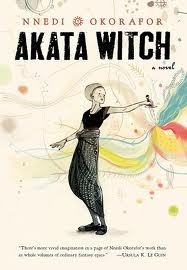 24. Akata Witch, Nnedi Okorafor (2011)
24. Akata Witch, Nnedi Okorafor (2011)
There should be more urban fantasy about sport.
Actually, there should be more sport in speculative fiction generally – are we really all such geeks that we can’t acknowledge the cultural power and significance of kicking a ball around a field? (JK Rowling at least acknowledged the importance of sport in school culture with Quidditch)
Akata Witch is special for many reasons – as with Healey and NZ, I don’t think I had read much about Africa at all before Okorafor’s books. Having been warmed up by the brain-expanding and confronting Who Fears Death (which would itself be a good contender for this list, despite its science fictional aspects), I welcomed Akata Witch, a challenging and wondrous story of outsiders, and African magic, culture and friendship.
But I’m also a soccer nut, and it was so lovely to read a female protagonist for whom playing soccer was a key part of her identity. There are a few great YA books that do a good job with soccer but this is the first time I’ve seen it in spec fic. MORE PLEASE.
25. The Lynburn Legacy: Untold, Unspoken, Sarah Rees Brennan (2012-2013)
You have to wait another year for the trilogy to be complete. I could have recommended Brennan’s other trilogy, which is wonderful and includes demons, dyslexia and goblin markets, and is packed to the brim with banterific characters that I love. But while there’s more city in The Demon’s Lexicon, the Lynburn Legacy is well on its way to being her more important urban fantasy.
These books have the literary tradition of the gothic at their heart, in the hands of a smart feminist writer who is having great fun boiling up the tropes and hurling them at unexpected characters. It’s based around a village and its community, with the idea that magic has always been there, simmering in secret, but because it’s a YA, the story begins with the teenagers of that community discovering the secret for the first time.
Revelation that the mundane is really magical is a key if not essential urban fantasy trope (many begin with the magic awareness already established and taken for granted by the protagonist, which is just as awesome and legitimate) and Brennan does a very good job with the reveals and their consequences in what looked at first like a sleepy little English village…
AND I’M DONE, THANK YOU VERY MUCH.
Aargh, 25 already? But I’m not done at all! I wanted to talk about Jennifer Stevenson’s Trash Sex Magic, Alice Hoffman’s Practical Magic, everything Holly Black has ever written and most of Justine Larbalestier’s work… but, no. Time to stop.
So, what would your top 25 Urban Fantasies be? Do yours have to have cities in them? Does YA even count? Does historical count? How do you feel about the angry trousers revolution, or would you prefer to be reading Charles De Lint?
Answers on a postcard! Or, you know, in the comments.
TANSY’S LIST WITHOUT ALL THAT COMMENTARY GETTING IN THE WAY:
1. The Almighty Johnsons (2011-2013)
2. Neverwhere, Neil Gaiman (BBC Radio 2013)
3. Diana Tregarde Investigates, Mercedes Lackey (1989-1991)
4. Guilty Pleasures, Laurell K Hamilton (1993)
5. Tam Lin, Pamela Dean (1991)
6. Fire & Hemlock, Diana Wynne Jones (1985)
7. Shadows Fall, Simon R Green (1994)
8. Growing Rich, Fay Weldon (1992)
9. Good Omens, Neil Gaiman and Terry Pratchett (1990)
10. Buffy the Vampire Slayer (1997-2003)
11. Locked in Time, Lois Duncan (1985)
12. Sunshine, Robin McKinley (2003)
13. “Magic For Beginners,”Kelly Link (2005)
14. Discount Armageddon, Seanan McGuire (2012)
15. Fruits Basket, Natsuki Takaya (1999-2006)
16. Ultimate Spider-Man, Brian Michael Bendis (writer), Mark Bagley & Stuart Immonen (pencils) (2000 – 2009)
17. Bad Power, Deborah Biancotti (2012)
18. Moonshine, Alaya Dawn Johnson (2010)
19. Soulless, Gail Carriger (2009)
20. The Diviners, Libba Bray (2012)
21. The Confessions of Dorian Gray, Big Finish Productions (2012-2013)
22. Guardian of the Dead, Karen Healey (2011)
23. Rampant (Killer Unicorns #1), Diana Peterfreund (2009)
24. Akata Witch, Nnedi Okorafor (2011)
25. The Lynburn Legacy: Untold, Unspoken, Sarah Rees Brennan (2012-2013)
The Best Laid Plans
 So, I’m doing NaNoWriMo this year which starts THIS FREAKING FRIDAY and I’ve had a completely scattered year with my available writing time shrinking and shrinking into nothing, and my momentum disappearing in a slow plume of smoke.
So, I’m doing NaNoWriMo this year which starts THIS FREAKING FRIDAY and I’ve had a completely scattered year with my available writing time shrinking and shrinking into nothing, and my momentum disappearing in a slow plume of smoke.
I had a brilliant plan to start getting up at 6am, to get a clear hour and a half of writing in before my ‘to do list’ brain kicked in and more importantly, the children woke up. I used to do a lot of writing at night but I’m just too tired these days.
It worked for two days. I finally got some serious fiction writing done without interruption! It was a bit of a struggle, and I wasn’t sleeping as deeply if I went to bed earlier, but I was sure it would all work out.
Then today when I got up I noticed that hmmm, it’s a lot lighter at 6am than it was two days ago. I guess that’s what you get as summer approaches…
And 4 year old Jem woke up at 6:14. Gah! Fail.
Still, I don’t see any other way of getting my Great Fairy Steampunk Novel finished, not to mention the stupidly long list of things I was supposed to get finished BEFORE November 1, so I’m going to have to stick with it, and train my children to understand that my parenting doesn’t start until 7:30.
Also today I got to do one of my favourite things – talking about Doctor Who! Lynne, Erika and I just brought some Verity! spark to the ABC, talking to Cassie McCullagh about all kinds of fun Doctor Who anniversary related things. It will be going out on Radio National in November, and then on the special digital channel that the ABC is setting up just for the anniversary weekend. Awww Australia, you are adorable.
Right, that’s enough blogging. I have an hour child-free before the pre-kinder run starts again! Time to write.

